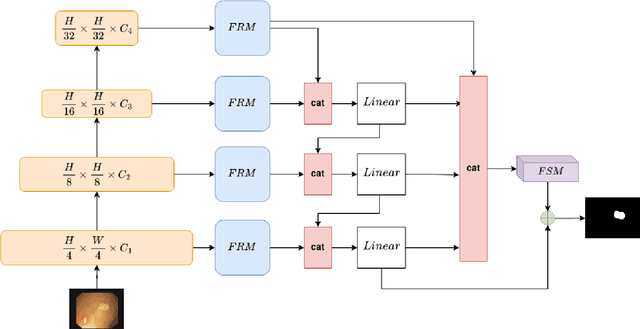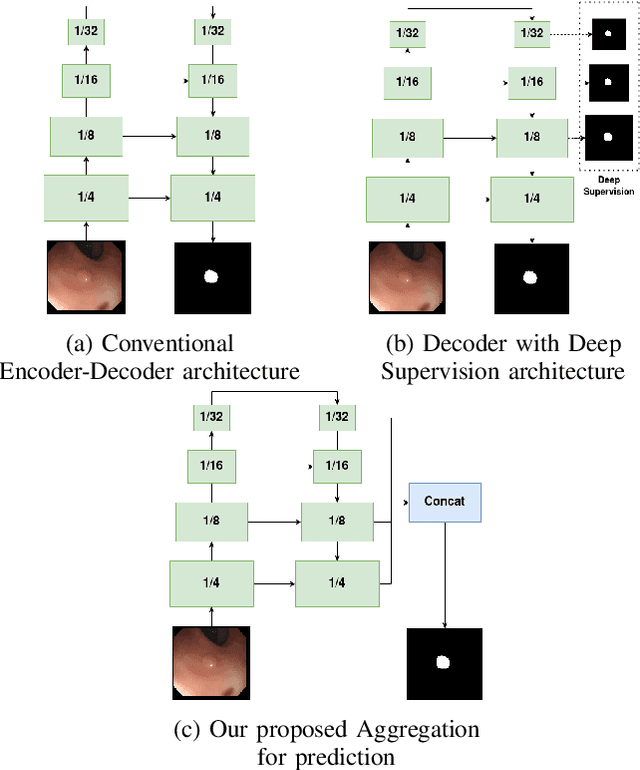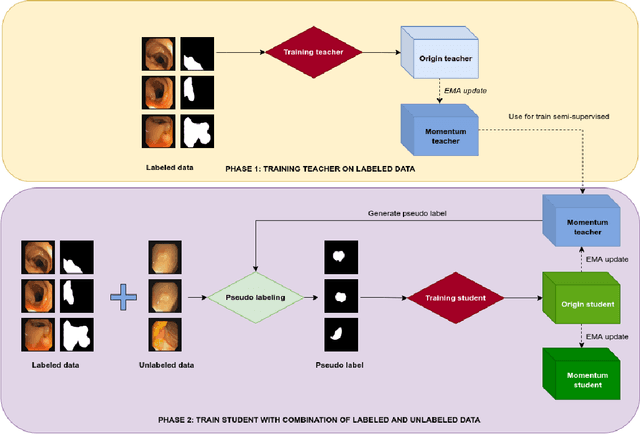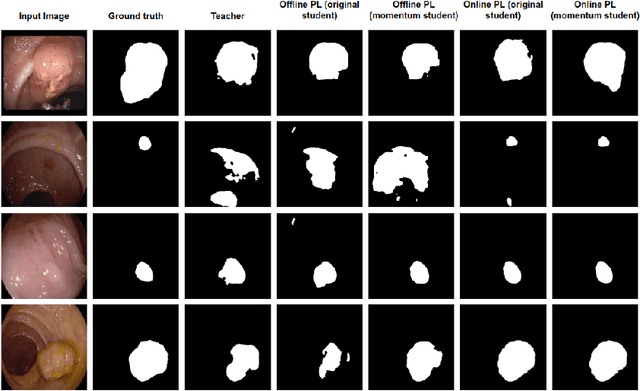Thanh Tung Nguyen
LAPFormer: A Light and Accurate Polyp Segmentation Transformer
Oct 10, 2022



Abstract:Polyp segmentation is still known as a difficult problem due to the large variety of polyp shapes, scanning and labeling modalities. This prevents deep learning model to generalize well on unseen data. However, Transformer-based approach recently has achieved some remarkable results on performance with the ability of extracting global context better than CNN-based architecture and yet lead to better generalization. To leverage this strength of Transformer, we propose a new model with encoder-decoder architecture named LAPFormer, which uses a hierarchical Transformer encoder to better extract global feature and combine with our novel CNN (Convolutional Neural Network) decoder for capturing local appearance of the polyps. Our proposed decoder contains a progressive feature fusion module designed for fusing feature from upper scales and lower scales and enable multi-scale features to be more correlative. Besides, we also use feature refinement module and feature selection module for processing feature. We test our model on five popular benchmark datasets for polyp segmentation, including Kvasir, CVC-Clinic DB, CVC-ColonDB, CVC-T, and ETIS-Larib
Online pseudo labeling for polyp segmentation with momentum networks
Sep 29, 2022



Abstract:Semantic segmentation is an essential task in developing medical image diagnosis systems. However, building an annotated medical dataset is expensive. Thus, semi-supervised methods are significant in this circumstance. In semi-supervised learning, the quality of labels plays a crucial role in model performance. In this work, we present a new pseudo labeling strategy that enhances the quality of pseudo labels used for training student networks. We follow the multi-stage semi-supervised training approach, which trains a teacher model on a labeled dataset and then uses the trained teacher to render pseudo labels for student training. By doing so, the pseudo labels will be updated and more precise as training progress. The key difference between previous and our methods is that we update the teacher model during the student training process. So the quality of pseudo labels is improved during the student training process. We also propose a simple but effective strategy to enhance the quality of pseudo labels using a momentum model -- a slow copy version of the original model during training. By applying the momentum model combined with re-rendering pseudo labels during student training, we achieved an average of 84.1% Dice Score on five datasets (i.e., Kvarsir, CVC-ClinicDB, ETIS-LaribPolypDB, CVC-ColonDB, and CVC-300) with only 20% of the dataset used as labeled data. Our results surpass common practice by 3% and even approach fully-supervised results on some datasets. Our source code and pre-trained models are available at https://github.com/sun-asterisk-research/online learning ssl
Development of a peristaltic micropump for bio-medical applications based on mini LIPCA
Apr 28, 2008



Abstract:This paper presents the design, fabrication, and experimental characterization of a peristaltic micropump. The micropump is composed of two layers fabricated from polydimethylsiloxane (PDMS) material. The first layer has a rectangular channel and two valve seals. Three rectangular mini lightweight piezo-composite actuators are integrated in the second layer, and used as actuation parts. Two layers are bonded, and covered by two polymethyl methacrylate (PMMA) plates, which help increase the stiffness of the micropump. A maximum flow rate of 900 mokroliter per min and a maximum backpressure of 1.8 kPa are recorded when water is used as pump liquid. We measured the power consumption of the micropump. The micropump is found to be a promising candidate for bio-medical application due to its bio-compatibility, portability, bidirectionality, and simple effective design.
* Uploaded by ICIUS2007 Conference Organizer on behalf of the author(s). 6 pages, 9 figures, 1 tables
 Add to Chrome
Add to Chrome Add to Firefox
Add to Firefox Add to Edge
Add to Edge